Spending 4 days in Malta without a car comes with certain limitations. However, even though you won’t have complete flexibility, you can still see most things the small island-state has to offer and enjoy a fantastic Malta vacation. Moreover, despite Malta’s compact size, the traffic is often heavy, which translates to unwanted stress. Therefore, in this article, you’ll find a 4-day Malta itinerary and many travel tips for a beautiful holiday.
Specifically, in the first part of this Malta guide, you’ll read tips regarding the best places to base yourself and where to stay. Additionally, I’ll share the best tours around Malta, which can help you see the attractions of Malta without spending a fortune. Finally, the second part of the article deals with planning your Malta itinerary and the locations you should visit.
So, let’s start now with the travel tips and the four days in Malta itinerary.
*Some of the links are affiliate links. It means that if you buy something, I might earn a small commission at no additional cost to you.
4 days in Malta: what you need to know (+ travel tips)
Located in the heart of the Mediterranean Sea, the island-state of Malta is home to almost half a million people. The country consists of three islands: Malta, where the capital Valletta is, Gozo, and Comino. Seeing all three islands in four days is doable even without a car, and you should not miss the opportunity to step foot in each of them.
However, there are a few things to remember while planning a car-free Malta holiday, and here’s what you need to know.
What is the best place to stay in Malta without a car?
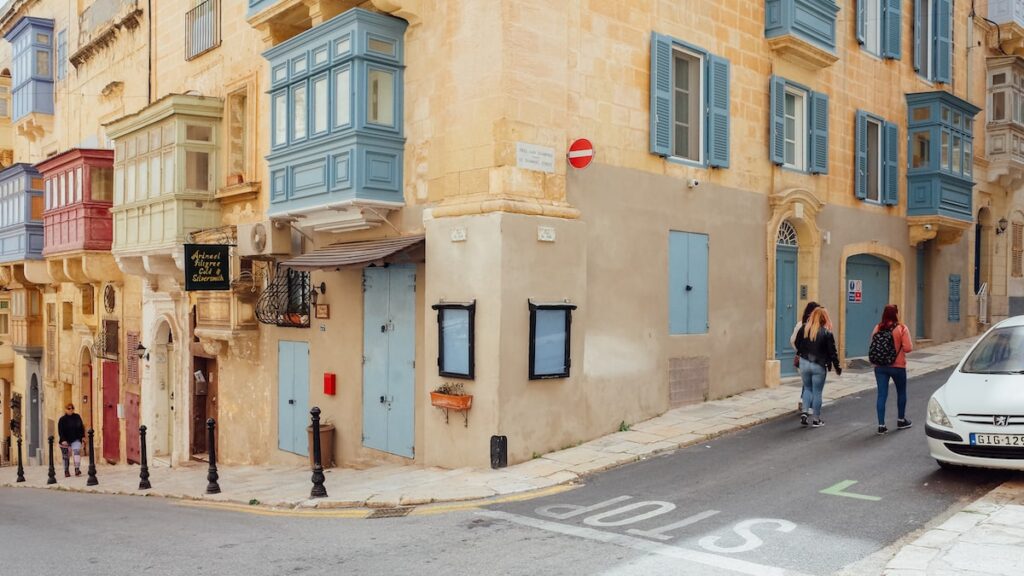
Valletta. Located on Malta’s main island, Valletta is the place to stay in Malta without a car.
If it’s your first time in Malta, don’t look elsewhere for accommodation. Try to stay in Valletta’s Old Town or somewhere close to it (like Sliema, the Three Cities, or St Julian’s).
The reason is that Valletta is the transportation hub of the country. Every bus starts there, and staying in downtown Valletta will make your life easier. Choosing any other place to stay in Malta means that most of the time, you will have to travel to Valletta and from there get another bus. The public transport network is good, but delays often occur, and as I already stated, Malta has some impressive traffic jams for its size.
In addition, you will probably have to sacrifice some time in transit, and that’s something to avoid when you have 4 days in Malta. Look no further: stay in Valletta or as close to it as possible.
How can I travel around Malta without a car?
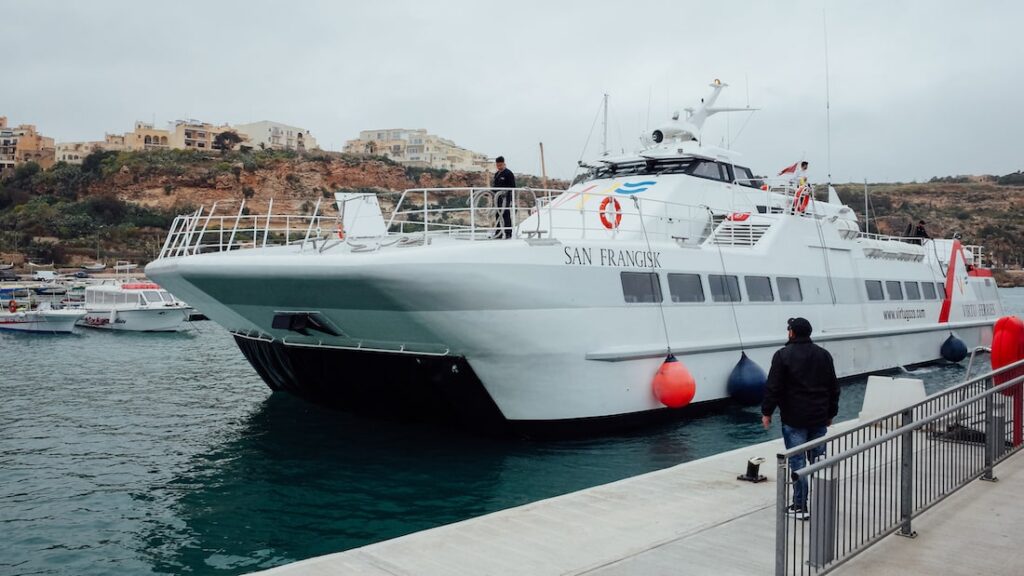
You have four options to travel around Malta:
- Bus
- Taxi
- Guided tours
- Catamarans
Let’s break them down and see how you can make the most of them.
Around Malta by bus
The buses of Malta are the most cost-effective way to see the country. Even though most buses feel relatively old, the network is extended, and they’ll bring you to most areas of interest. A bus ticket currently costs 2 euros, and you can see a detailed schedule on the local public transport website.
However, please keep in mind that Malta has no intercity buses. Every bus is a city bus, which means that the bus will stop several times when traveling from City A to City B. For example, to reach the port of Cirkewwa (where the Gozo ferry departs) from Valletta, the bus will stop 97 times. That’s a distance of ~40 km, and you’ll need 1 hour and 40 minutes to reach Cirkewwa.
Malta’s taxis
The taxi is definitely a pricier but significantly faster option. You can call a cab from any place in Malta, and most times, taxis operate at fixed prices. You can ask at your hotel’s reception for a taxi. For the Valletta-Cirkewwa route, expect to pay approximately 35-40 euros; however, the journey will last roughly 35-40 minutes.
Another option is ecabs, which is Malta’s Uber. You can download the ecabs app before traveling to Malta, and you can book a driver whenever you need one. I used ecabs on several occasions in Malta and was delighted by their services. Of course, ecabs is much pricier than the bus, but it’s also about 15-20% cheaper than regular taxis.
You can visit the ecabs website and download the iPhone or Android app.
Guided tours in Malta
Booking a guided tour in advance is an excellent option because you can see several places in one strike. Moreover, you won’t depend on late buses or costly taxi rides, and all you have to do is be at the pick-up point on time. Traveling around Malta without a car is probably less challenging than you might think, and prebooking a guided tour will take you to every place you want to see. In addition, the tour guides will share facts and stories about the country, and I found them highly professional.
Throughout my journeys, I came across several websites offering guided tours (private or not). The one that I always check before planning a trip is Get Your Guide. Later in the article, I will add specific info about Malta’s best tours and activities.
The catamarans
The catamarans will not bring you everywhere in Malta. They are mainly used for travels between Valletta and Gozo, Malta’s sister island. They are a great shortcut because they significantly reduce travel times. You can travel between Valletta and Gozo in 40 minutes, and the ticket costs approximately 15 euros. That’s a significant reduction in travel times. If you travel by bus and ferry to Gozo, you’d need 1 hour and 40 minutes from Valletta to Cirkewwa, and another 25 minutes from Cirkewwa to Mgarr, Gozo’s port.
However, the catamarans tend to be shaky, even with a slight breeze. Therefore, if you easily get seasick or sea travels scare you, try to avoid them when the sea is rough. Additionally, if the wind is too strong (and that’s not uncommon in Malta), the catamarans won’t operate. The two operators serving the routes between Valletta and Gozo are Virtu Ferries and Gozo Fast Ferry. Both run a couple of times per day, and if the services are canceled due to weather, they always post updates on their Facebook pages.
What’s the plug type used in Malta?
Malta uses type G plugs (230 V). Therefore, you’ll need an adapter if you travel to Malta from most European countries.
Some hotels in Malta offer free adapters or have installed USB sockets for their visitors’ ease. However, I think it’s better to buy an adapter before your journey to avoid surprises and lose time buying one. I highly recommend this universal travel adapter that has become a steady companion in my journeys.
You can also check your destination’s plug type here.
4 days in Malta itinerary

In this section, you will find my 4 days in Malta itinerary. You can, of course, use it for your 5, 6, or 7 days in Malta, or you can squeeze everything into three days. However, I firmly believe that in order to see everything at a relaxed pace, you’ll need at least 4 days in Malta. So while I find it important to see as much as possible, the itinerary proposed below will give you enough breathing space to relax.
In addition, if you’d like to read more about one of the locations mentioned below, I also wrote dedicated guides for each place. You can find them in the “Bonus” section beneath each day’s route.
Let’s start.
Day 1: Valletta
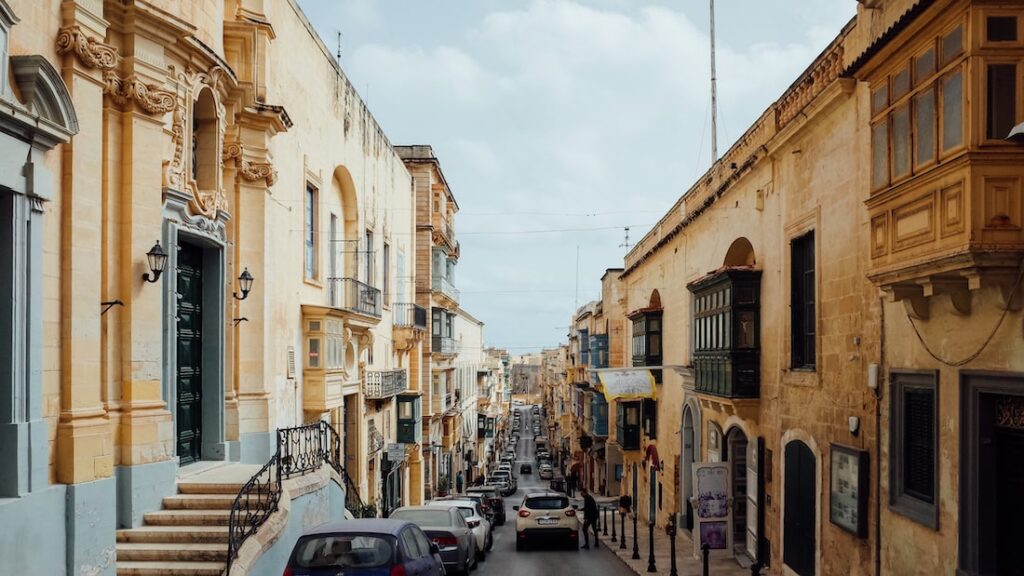
Malta’s international airport is a 15-minute drive from Valletta, in Luqa. The ride to your hotel (bus or taxi) will be pretty fast, and reaching your accommodation in Valletta won’t take long.
The amount of sightseeing you can do on the first day of your Malta trip will largely depend on the time of arrival. If you arrive in Malta between the early morning and late afternoon, you will have enough time for an initial walk in Valletta. The city center is compact, and you can walk from edge to edge in less than thirty minutes.
However, Valletta’s beauty and history are on its side streets, and I can only encourage you to stroll around as much as you can. Then, later in the evening, you can enjoy a delicious dinner in the city’s heart and finish your day with a drink.
Valletta must-sees
Valletta has an impressive number of sights and places of interest for a city its size. So, the best things to do in Valletta are:
- Saint John’s Co-Cathedral, the Roman Catholic Church, features two impressive Caravaggio paintings.
- The Upper Barrakka Gardens, where you can see the Saluting Battery and a splendid view of the Grand Harbor.
- The Grandmaster’s Palace, where the Master of the Order of Saint John lived.
- Valletta’s City Gate, designed by Renzo Piano.
- Casa Rocca Piccola a beautiful 16th-century palazzo with more than fifty rooms.
- Fort St Elmo, the place where the Great Siege of 1565 took place.
- Muza, the museum of fine arts of Malta.
Several tour operators offer walking tours in Valletta. Some of them include a guided tour of Saint John’s Co-Cathedral. You can see the best walking tour in Valletta here.
Where to stay in Valletta
Valletta has numerous accommodations, but it’s better to book in advance. The most convenient of them are located within the city walls and here are the best hotels in Valletta.
Casa Ellul. If you enjoy staying in boutique hotels, that’s one of the best options in Valletta. Casa Ellul offers unique rooms with original Maltese floor tiles. In addition, the hotel’s building is a masterpiece: a well-preserved 19th-century building with lots of charm. Book your room at Casa Ellul.
19 Rooms. That’s one of the most convenient hotels in the city center. It’s just 3 minutes away from the beach, 350 meters away from the Grandmaster’s Palace, and very close to Casa Rocca Piccola. Book your accommodation in 19 Rooms.
Sally Port Suites. Sally Port Suites offers beautiful, elegant rooms and a convenient location close to Barakka Gardens. See the prices for Sally Port Suites here.
Where to eat in Valletta
As you probably expect, the food in Malta is typical Mediterranean. There are plenty of places to choose from; however, the best options are San Paolo Naufrago & Taste. The two restaurants are located at the most instagrammable spot in Valletta. You will find them on the corner of St Paul Street with St Lucia Street.
Here, everything is about the environment: the tables and chairs are on the charming stairs of St Lucia Street, and at night everything is illuminated with colorful lamps. See the St Lucia location on Google Maps.
Bonus: Detailed Valletta Guide
As promised, here’s the ultimate Valletta travel guide with loads of info and extra travel tips.
Day 2: The Three Cities and Marsaxlokk

After having breakfast at your hotel, head to the Three Cities. These are the three nearby suburbs you can see from Grand Harbor (or even better, from the Upper Barrakka Gardens), and you can reach them by boat in 15-minutes from Valletta. Sometimes, the boat won’t operate when the sea is rough, but you can also visit them by bus (45 minutes).
The Three Cities are Birgu, Senglea, and Conspicua, and the most impressive is by far Birgu, where the Fort Saint Angelo and the Inquisitor’s Palace are. On the other hand, Senglea hosts the beautiful Gardjola Gardens, while in Conspicua, you’ll see the Church of Our Lady of the Immaculate Conception. To make the most of your Three Cities itinerary, you can book a 4 hours tour here.
Afterward, head over to Marsaxlokk, Malta’s most picturesque fishing village. Marsaxlokk is on the southeastern part of Malta island, and it’s home to one of the most impressive bays you’ll find in the country. Apart from that, it hosts an excellent fish market, and it’s a spectacle to observe its life. Last but not least, Marsaxlokk is one of Malta’s top places to eat fresh fish, and I recommend three restaurants: Tartarun, T’Anna Mari, and Capo Mulini.
Saint Peter’s pool, Malta’s famous beach, is also close to Marsaxlokk; therefore, if you visit Malta in the summertime, make sure to stop for a quick swim.
Bonus: Marsaxlokk travel guide
Marsaxlokk is hands down one of the best places to see in Malta. You can read more on my Marsaxlokk guide.
Day 3: Gozo
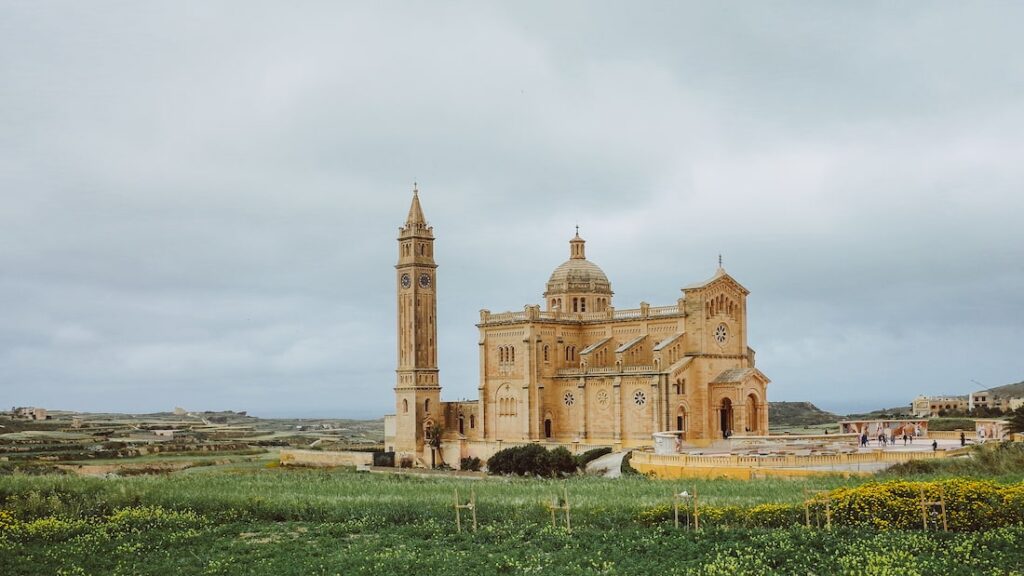
The third day of your Malta vacation should be all about Gozo. Malta’s sister island feels less urbanized and underpopulated. The landscape is rawer, and the limestone produced on the island is used in house building and creates a unique atmosphere.
Due to the numerous things to do, Gozo will occupy a full day of your holiday. The top things to see in Gozo are:
- The Cittadella in Victoria, a town inhabited since the Bronze Age, features stunning buildings and viewpoints.
- Rabat, a modern-day settlement with narrow streets and local shops.
- Ta’ Pinu Basilica, one of the most beautiful churches on the island.
- Dwejra Bay, where the Azure Window once stood.
- Xwejni Salt Pans, one of the most iconic Gozo locations due to the salt pans and the scenery.
- Ggantija Temples, the oldest temples in the world, dating back to the Neolithic Age.
- Calypso’s Cave, where nymph Calypso supposedly kept as a prisoner Ulysses for seven years.
- Comino, the third inhabited island of Malta.
Tours to Gozo from Valletta
There are various day trips from Valletta to Gozo, most of which will show the island’s major attractions. The best day trip is the full-day quad bike tour to Gozo. A powerboat will bring you to Gozo, and you’ll start riding your quad bike with an experienced guide. You’ll see every location on the island, like Ramla Bay, Marsalforn, the Salt Pans, Inland Sea, Fungus Rock, and the Calypso cave. You’ll stop at the Blue Lagoon in Comino on the way back. You can book the full-day quad bike tour here.
Bonus: Gozo travel guide
Gozo is becoming increasingly popular among people searching for a quiet Malta holiday. I wrote a thorough Gozo travel guide if you want to learn more about it.
Day 4: Mdina, Rabat & a bit more of Valletta
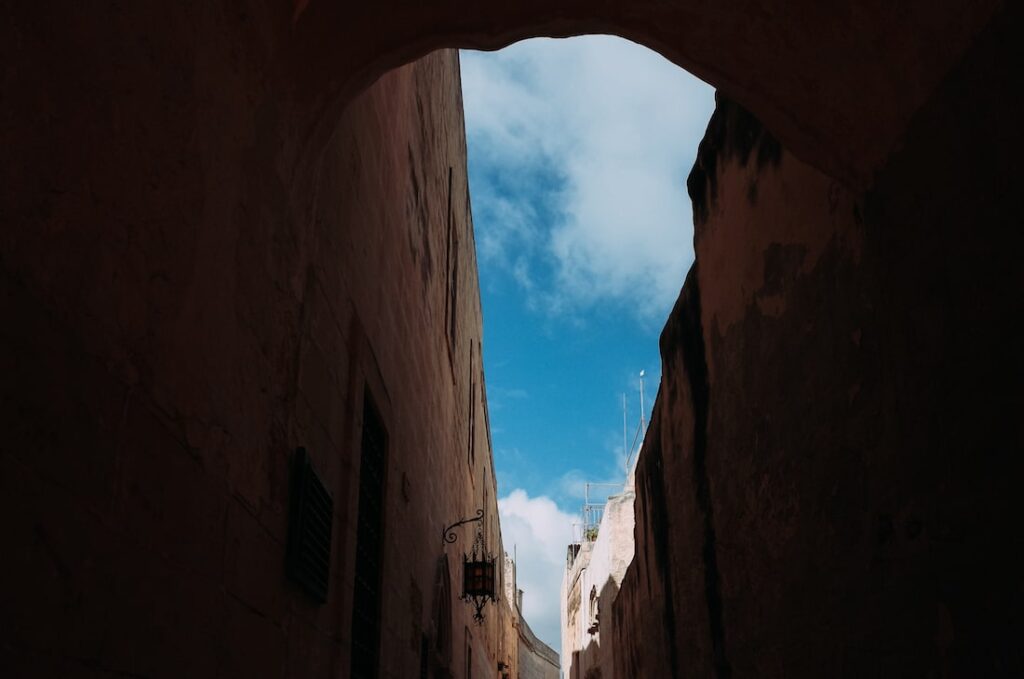
The last day of your Malta vacation will be about the Silent City of Malta, Mdina. You won’t need more than half an hour from downtown Valletta to get to Mdina, and that’s one of the most picturesque locations in Malta. Nowadays, Mdina is home to just 300 people, but despite its compact size, it was Malta’s capital for more than 2,000 years.
The places of interest in Mdina are:
- Mdina Gate, the impressive Baroque entrance to the Silent City.
- St Paul’s Cathedral, featuring a stunning interior.
- Palazzo Falson, the second-oldest building in Mdina, nowadays hosts a museum in its seventeen rooms.
- The Bastion Square Viewpoint, from where you can see the whole country.
- Rabat, Mdina’s suburb and St Paul’s Catacombs location.
- Piazza Mesquita, the town’s iconic spot and a Game of Thrones location.
If you’d rather have a guided tour, there’s an excellent one that will bring you from Valletta to Mdina, Rabat, and the famous San Anton Palace and Gardens. It lasts 5 hours, costs 28 euros, and you can book a place here.
Finally, after enjoying Mdina, head back to Valletta and explore whatever you might have missed on the first day. Hopefully, you will have enough time to enjoy a museum visit or a quick lunch (or both) before heading to the airport for your flight back home.
Bonus: Mdina guide
Mdina had a great impact on me, and I loved its vibe. I wrote a separate guide, and you can read everything about Mdina here.
4 days in Malta FAQ
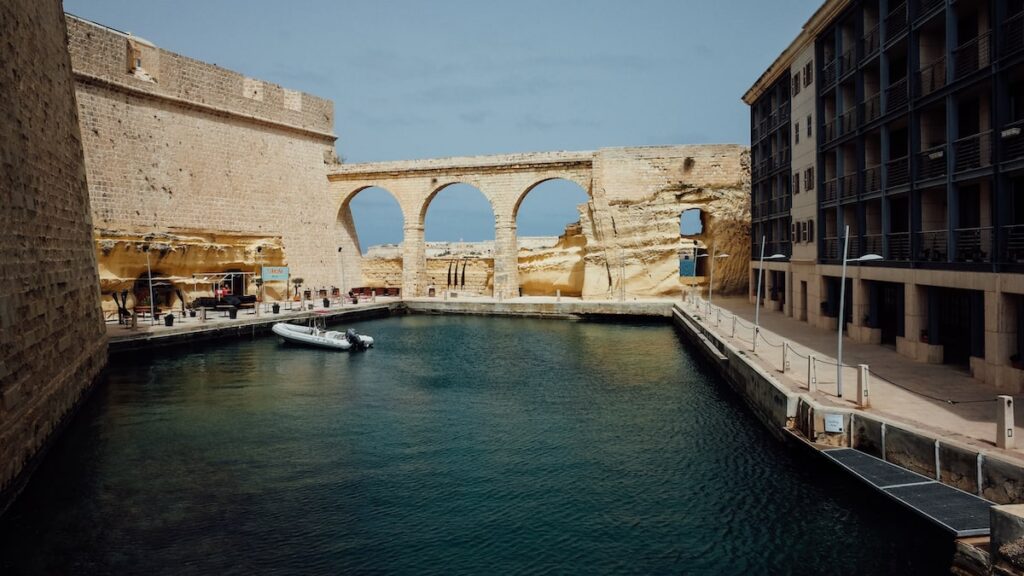
I’ll reply to some of the most frequently asked questions in this section of the four days in Malta article. If you have more questions about your upcoming Malta holiday, please don’t hesitate to ask in the comments below. I’ll do my best to reply.
Are 4 days in Malta enough?
Four days in Malta are enough to see the country’s main attractions without stress.
Can I stretch this Malta itinerary to 5 days?
Yes. If you have 5 days in Malta, I suggest staying one evening in Gozo. Or, if you are more into historical sightseeing, explore Valletta at a slower pace.
Can I explore Malta without a car?
Absolutely. The public transport network is good, and you don’t need a car to travel around Malta. Of course, reaching some locations will take longer, but you won’t miss anything when traveling to Malta without a car.
Is a week in Malta too long?
No. If you have a week in Malta, you can stretch the itinerary and have more free time in the country. You can use two days to explore Valletta and three days to see Gozo, where you can also go hiking or have a bike tour. Plus, you can spend time at the beautiful beaches and swim in Malta’s crystal clear water.
Where should I stay in Malta for the first time?
Valletta. That’s Malta’s most beautiful city and the place where most buses start from. However, if Valletta is out of your budget, consider Sliema or Saint Julian’s if you love parties.
Is Malta safe for tourists?
Malta is one of the safest countries in Europe. Pick-pocketing exists everywhere, but if you use common sense, you won’t have any issues in Malta.
Is Malta expensive?
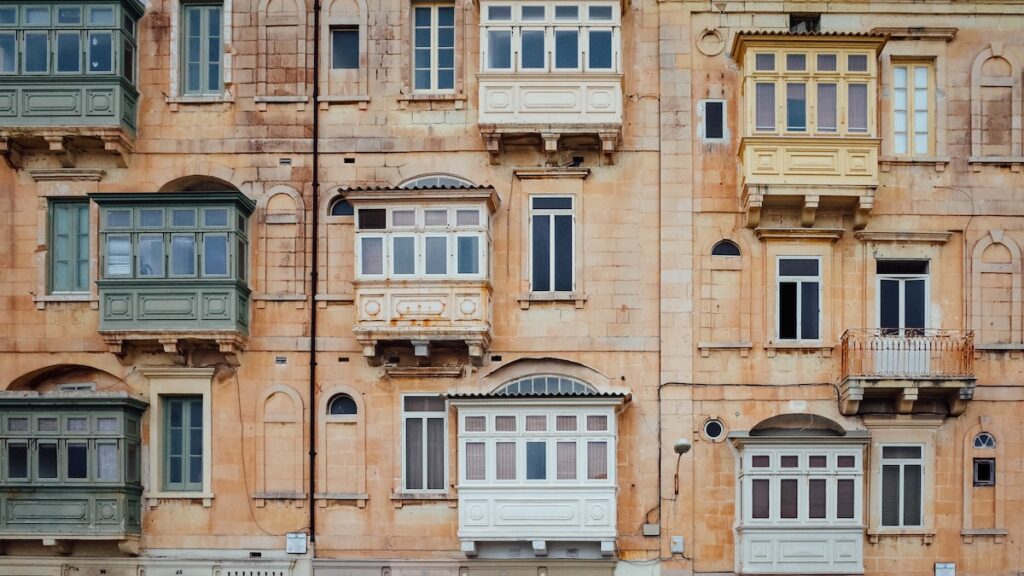
Malta is not more expensive compared to other European capitals. In fact, food in Malta is cheaper, and only in Valletta can you expect some slightly elevated prices.
When is the best time to go to Malta?
The best months to visit Malta are April, May, September, and October. During the summertime, Malta tends to be very hot, and it’s a hassle to do proper sightseeing.
How many UNESCO World Heritage Sites does Malta have?
Malta has three UNESCO World Heritage Sites: the City of Valletta, the Ggantija Megalithic Temples, and the Ħal Saflieni Hypogeum. You can read more about them here.
Can I travel to Malta from Sicily?
Yes, you can travel from Catania to Malta by ferry.
Is Malta water safe to drink?
Yes, you can drink tap water in Malta. If you are worried, mineral water is fairly priced, and you can buy a couple of bottles from the supermarket.
4 days in Malta itinerary: conclusion
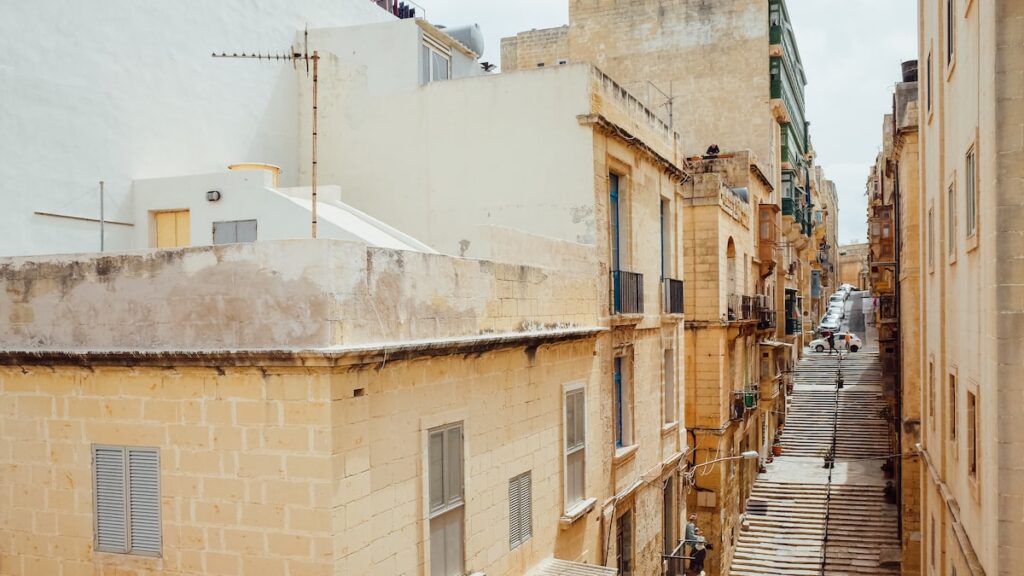
Malta is one of the most beautiful destinations in southern Europe, enjoying a fantastic climate all year long. Spending 4 days in Malta will give you a good impression of the small island-state, and you’ll have enough time to relax and enjoy. If you spend four days in Malta without a car, check the bus schedules carefully and plan accordingly. Moreover, using services like ecabs or guided tours is an excellent option if you can afford the extra cash: they will reduce travel times and take you to several places of interest.
Overall, spending 4 days in Malta guarantees a fantastic holiday, especially if you come from Northern Europe. Even in the heart of winter, Malta enjoys sunny days, and a long weekend in Malta will be a rewarding experience.
More Malta: Following the steps of Thomas Pynchon in Valletta
Pin it for later
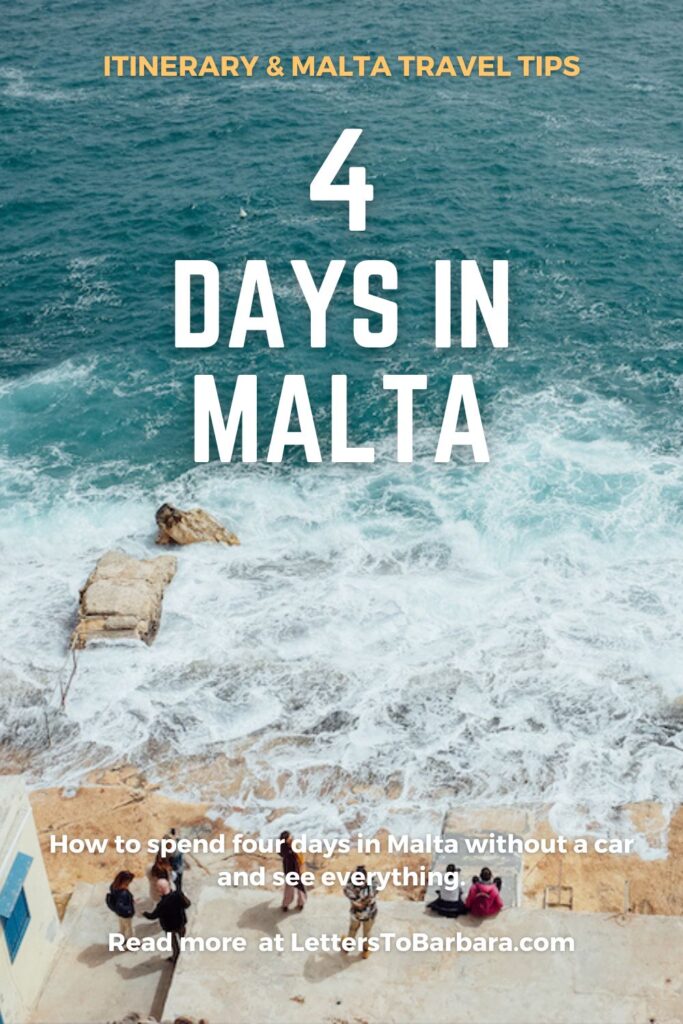
Sharing is caring. Please share this 4 days in Malta itinerary with your friends.
Last Updated on October 1, 2022 by George Pavlopoulos


